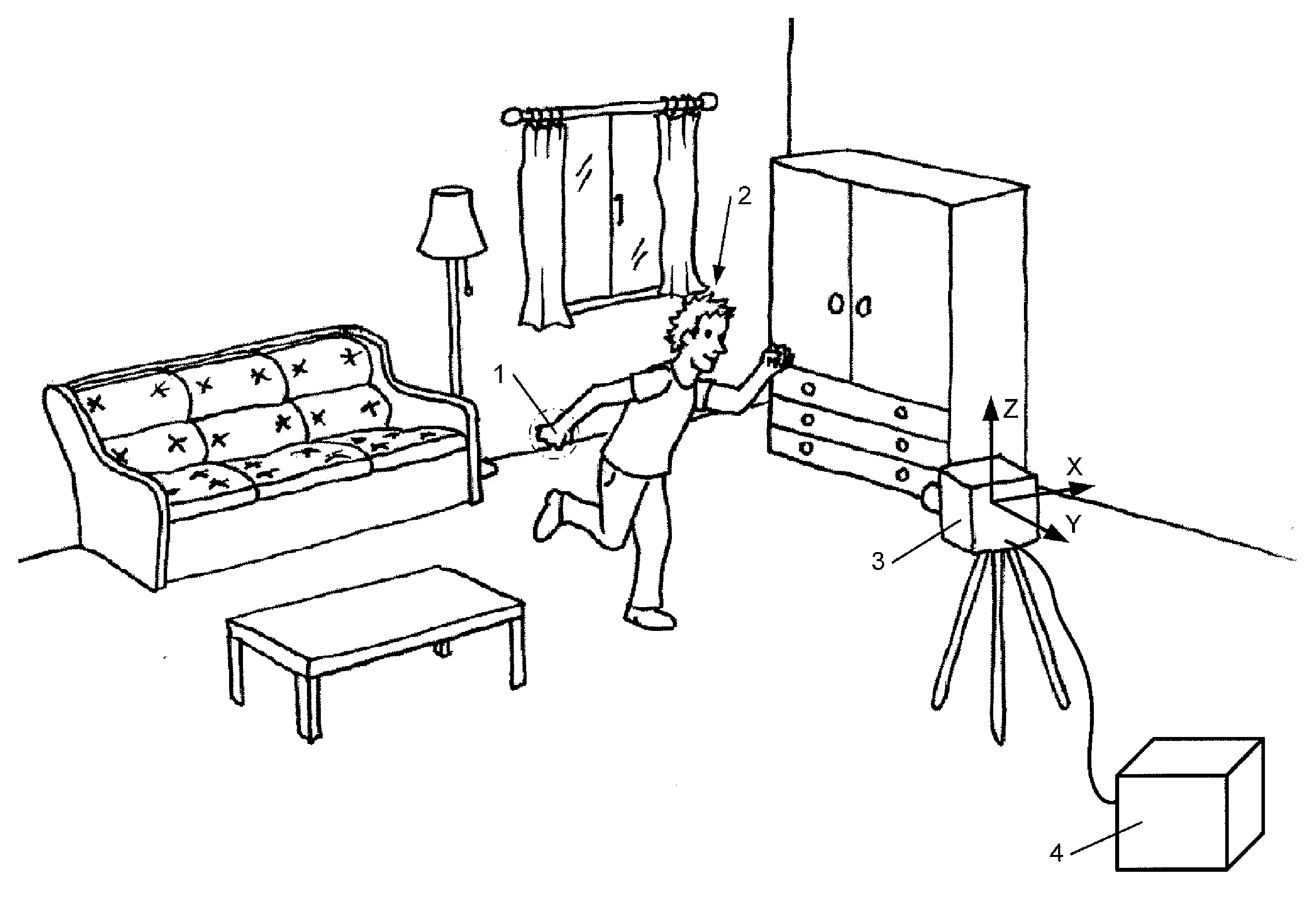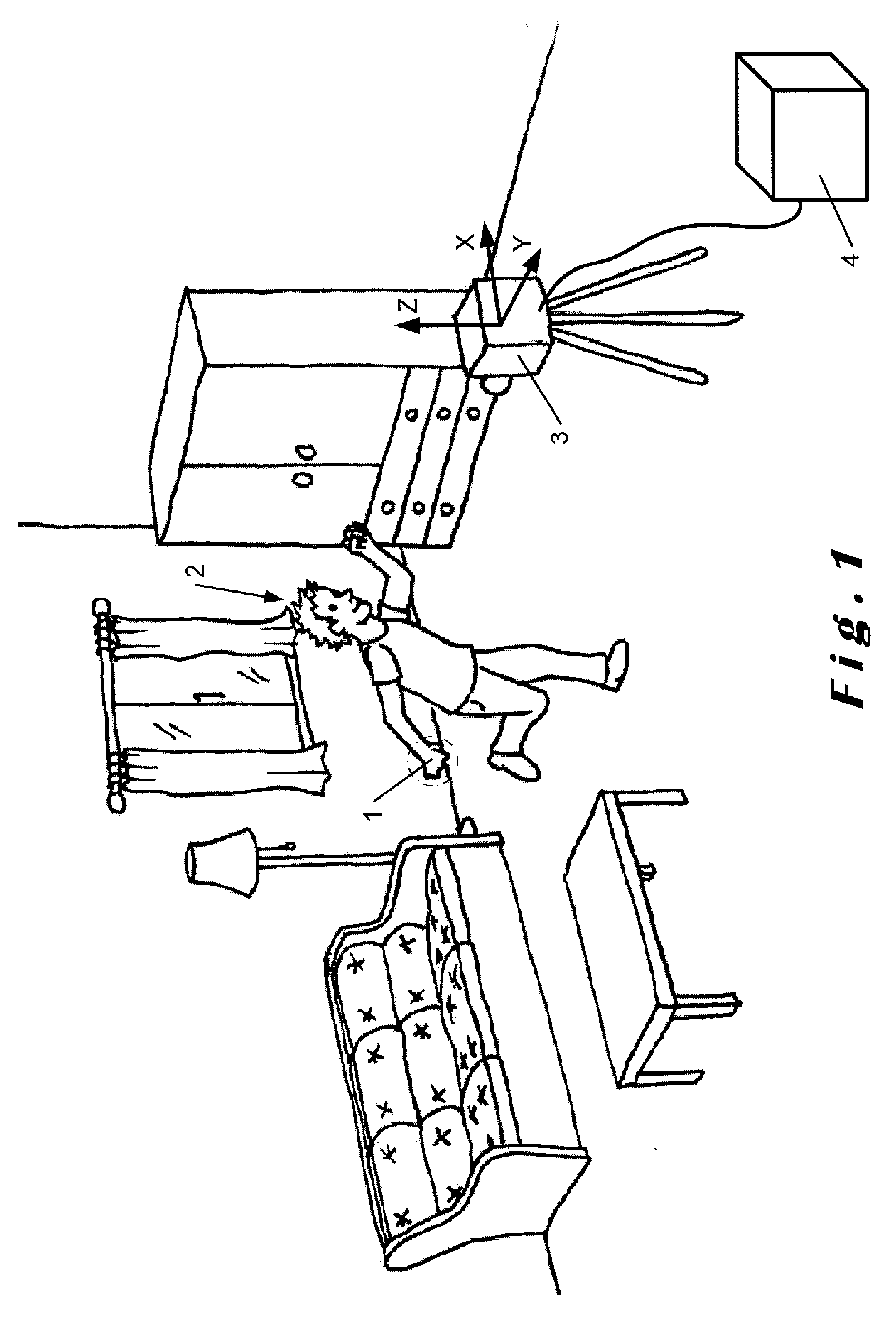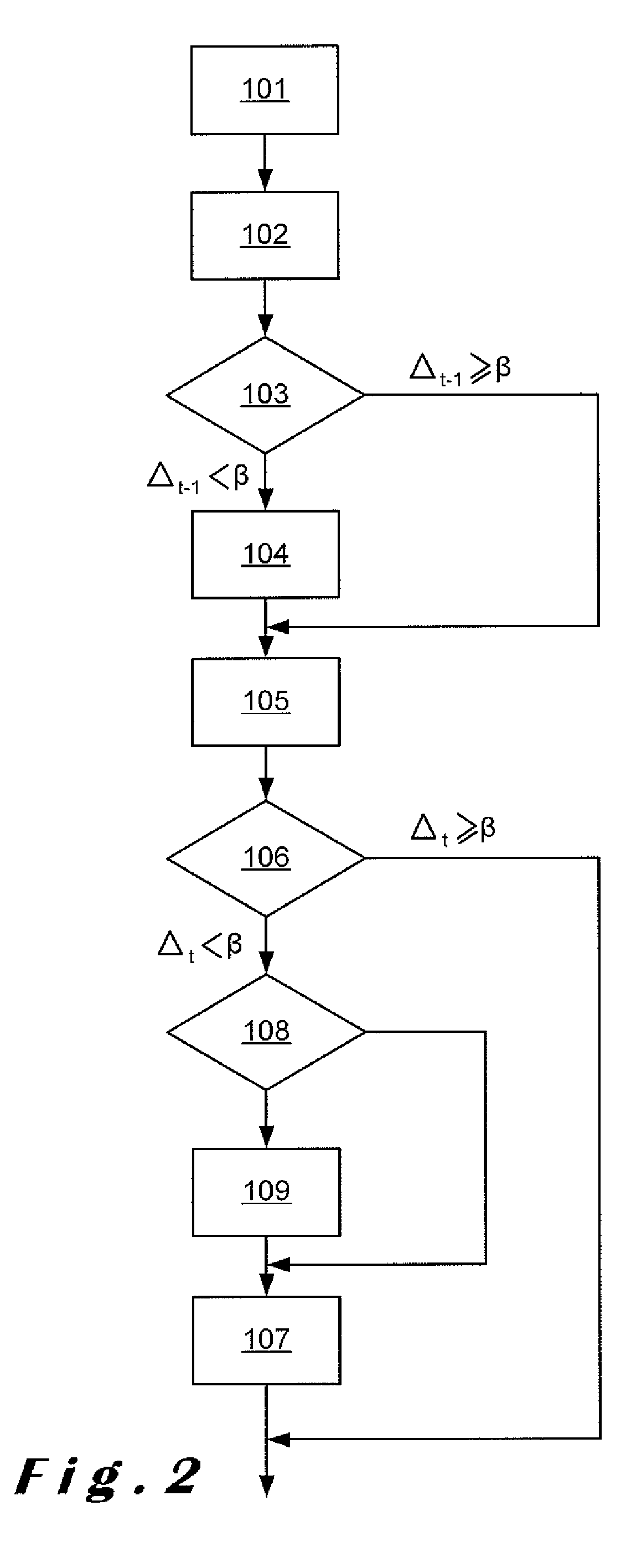Stabilisation method and computer system
a computer system and stabilisation method technology, applied in the field of stabilisation methods and computer systems, can solve the problems of introducing perceptible latency/delay or mask slow, generating noise or moderating the accuracy of the digital expression of the continuous physical variable, and only able to output discrete readings of the variable, so as to prevent the introduction of noticeable delay and reliably filter noise
- Summary
- Abstract
- Description
- Claims
- Application Information
AI Technical Summary
Benefits of technology
Problems solved by technology
Method used
Image
Examples
Embodiment Construction
[0034]A specific embodiment of the invention is illustrated in FIG. 1. In this particular embodiment, the method of the invention is used to stabilise the motion of the right hand 1 of a human user 2 as perceived through a 3D imaging sensor 3 connected to a computer system 4. In a particularly advantageous embodiment, the 3D imaging sensor 3 is a TOF camera. However, other types of digital imaging systems, such as 2D cameras, stereo cameras, LIDAR, radar, sonar, etc. may alternatively be used.
[0035]The 3D imaging sensor 3 captures 3D image data of the room in which the human user 2 stands, comprising a 2D image of the room with a plurality of pixels and a depth value for each pixel corresponding the distance to the 3D imaging sensor 3 of the point imaged by that pixel. Since the X and Y positions of the pixels in the 2D image themselves correspond to zenith and azimuth angles of the points they represent with respect to the 3D imaging sensor 3, these 3D image data can be illustrated...
PUM
 Login to View More
Login to View More Abstract
Description
Claims
Application Information
 Login to View More
Login to View More - R&D
- Intellectual Property
- Life Sciences
- Materials
- Tech Scout
- Unparalleled Data Quality
- Higher Quality Content
- 60% Fewer Hallucinations
Browse by: Latest US Patents, China's latest patents, Technical Efficacy Thesaurus, Application Domain, Technology Topic, Popular Technical Reports.
© 2025 PatSnap. All rights reserved.Legal|Privacy policy|Modern Slavery Act Transparency Statement|Sitemap|About US| Contact US: help@patsnap.com



